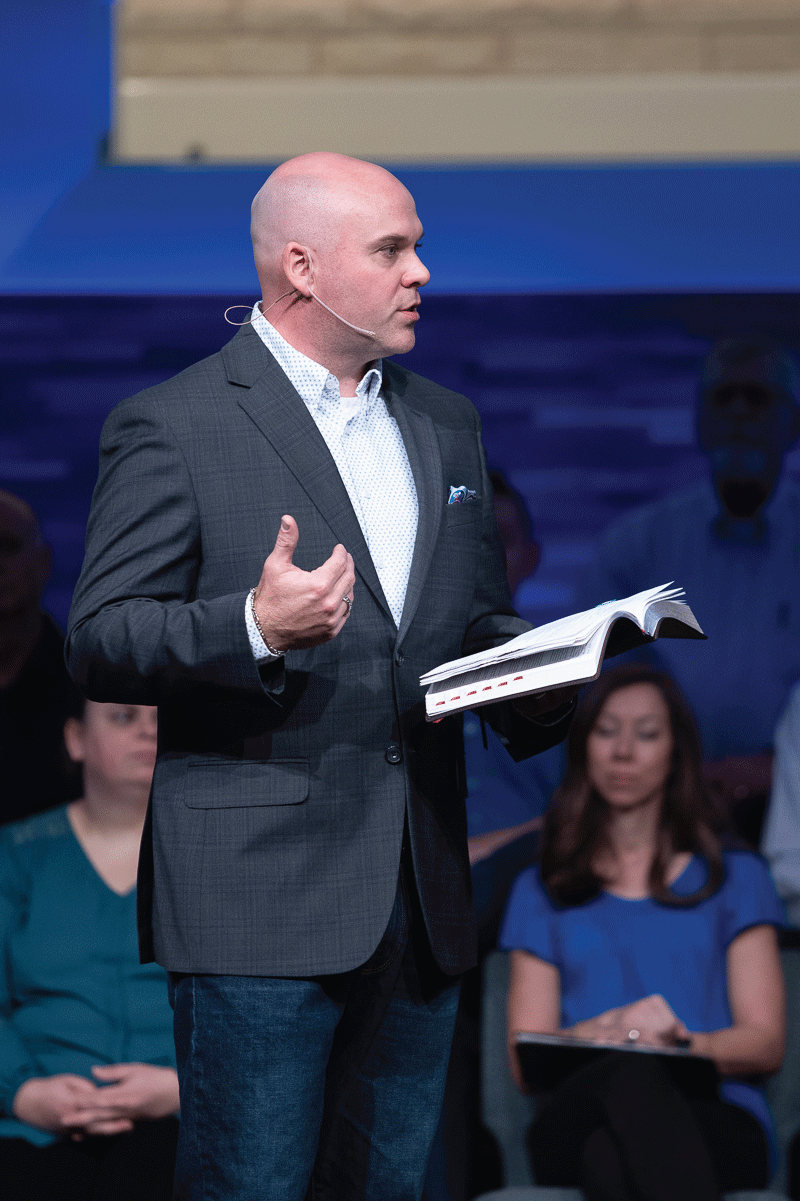
Multisite Campus Operations
No surprise. A campus pastor leading a multisite church faces challenges galore. They not only need to run their own site successfully, but they must also ensure that their messaging is unified with what’s being delivered across all sites, and that it reflects the church’s big-picture DNA.
“You need systems in place to scale and understand how to make things sustainable, to save you time, stress and money,” says Kayra Montanez, pastor of campuses at Liquid Church, which has its main church in Parsippany, New Jersey, and seven sites (five permanent) throughout the state. “You also need alignment between a campus team and central staff.”
Typical challenges revolve around the preaching strategy, mission-alignment and reporting structure. And while locations’ (permanent and portable) technology and funding are all important considerations when running a multisite campus—not to mention the sermon delivery, whether by video or in-person—it’s having a strong campus pastor that will ultimately lead to a site’s success.
Keri Ladouceur, pastor of campuses at Community Christian Church, with its main church in Naperville, Illinois, and eight sites throughout the Chicagoland area, plus an online expression, notes there’s a consistent challenge to share the same vision and mission so that everyone is headed in the same direction. She adds there is also a variety of different funding challenges with multisite models.
“Clarity is really an important factor—clarity in what we’re trying to accomplish, clarity around all the things we commit to, and even clarity on who decides the vision,” she says. “We want our people to feel like they are clear on what the expectations are and give them the tools to do their jobs well.”
Trey Brunson, pastor of campuses and discipleship at The Church of Eleven22, based in Jacksonville, Florida, with 10 campuses (two in prisons) throughout Northeast Florida and South Georgia, has been around ministry his whole life, following in his father’s footsteps.
In his mind, the biggest challenge is thinking about all the sites equally and ensuring things are being executed to set standards, whatever they may be.
“We broadcast the same message at all of our campuses,” Brunson says. “Unless we have a campus pastor preach weekend, [and] I pull all the guys together and we work on a wireframe, where I present the text and general outline, and they have freedom to use their voice. But they are all preaching the same message.”
Staffing issues
One of the bigger issues with running a multisite campus is getting the most out of employees, since oftentimes a church can’t hire much additional staff. Brunson shares that when a new site comes online, he hires seven staff members for the campus.
“We think about how to standardize things in order to scale and grow without having to increase our central staff,” he notes. “That puts a lot of strain on campus, because you’re trying to minister to your people and shepherd the flock that God has brought to you, so one of my main responsibilities is walking in between central and campus every single day and making sure things are being done right.”
Montanez believes one of the big challenges is hiring entrepreneurial leaders who have the spirit of building things and wanting to try new things.
“But at the same time, they have to live within the culture and carry it as it’s established by the lead pastor,” she says. “They need to live in this paradox of being a go-getter and wanting to try new things, but carrying the culture of the church into the campus that’s part of a bigger whole.”
Ladouceur notes that staff engagement is sometimes a challenge because they might not always feel like part of the team when working at a different location. So it’s important that everyone feel engaged in the mission of the work.
Staying on message
Community Christian Church writes its message in community, where 6-8 people touch every message. And Ladouceur feels that this is the most profound thing the church does.
“Certainly, the message would be different in different aspects at every location, but there would be the same theme, the same big ideas, the same text and the same key points, and we have a commitment to that,” she says. “If I’m wanting to change something in the message, we work that out in unity. It’s a high level of trust and empowerment.”
Liquid Church streams its message across all locations, so it keeps everyone aligned on messaging in terms of what they are doing as a church, what’s important to them and the vision of where God is calling them. That also means the same songs are being sung and the same text is being heard.
“Everything is centralized in that they are getting it from the main stage,” Montanez describes. “Our hub creates all the content that our local campuses execute on, so the messaging will always be the same and aligned.”
Branding and location concerns
At Liquid Church, Montanez says that while the ministry is well known throughout Northern New Jersey, they have a new campus in Princeton where the church is not a highly recognized entity. So she and her team are working on ways to saturate that part of the state with the church’s branding and message.
“Branding of who we are and walking into our building and knowing it is a Liquid Church campus, over time, we have gotten better at that,” Montanez says. “We have systems and processes in place that cover that.”
For portable sites, especially post-Covid, Montanez notes the church must work even harder at creating spaces where the community aspect, children’s ministry and worship are better than what people are going to get on video.
“The best part of the service can’t be what’s on video, otherwise there is no incentive to attend in person,” she says. “These portable campuses are working so hard to create community and that’s what keeps people coming back. That’s a big part of our growth mission, as well.”
Another challenge that oftentimes accompanies portable sites is that they are used for other functions. For example, one of Liquid Church’s sites is in a high school, and they sometimes need the stage for plays. So it can easily become cluttered with props. Then, in the parking lot, it can get heavily congested if the school has other activities taking place on the day of worship.
Doing it well—and making it even better
“When multisite is running well, there can be a tremendous sense of shared gifting, and we benefit from strengths and gifts from other leaders,” Ladouceur notes. “It’s less hierarchical and more empowered and familial, and certainly we’re better together.”
Montanez notes that the beauty of a multisite campus is in living out what scripture calls “every person is a part of the body.”
“It takes so much and so many people to make it work, that no one person can get the credit,” she adds. “You really do see people shine in their role that God has assigned them to play. It all comes to light beautifully when we lead in a multisite manor, because one person can’t do everything.”



